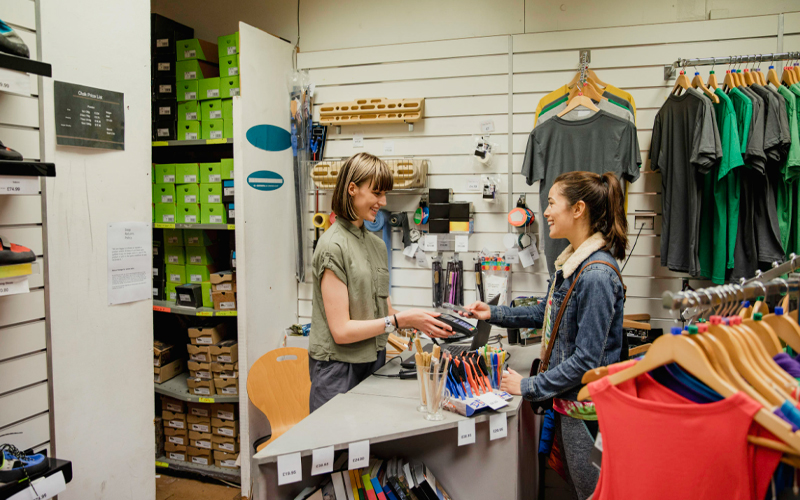Is ‘business as usual’ working for players in one of the largest industries globally in the 21st century, consumer packaged goods (CPG)? Or, are the forces of big data, machine learning, artificial intelligence and ultra-cheap hardware turbo-charging the space?
The CPG industry consists of products such as food, beverages, household cleaners, toiletries, tobacco, and cosmetics, and is expected to hit 2.4 trillion USD globally by 2028. By dint of this size, the upstream and downstream logistics and related industries are staggeringly huge as well - think packaging, supply chain, marketing and so on.
Some of the key markers of the CPG industry include relentless demand, large numbers of players, high market saturation and low consumer switching costs. It goes without saying that in such an industry, data can play a pivotal role in any player’s success. Yet, astonishingly, the power of data goes under-utilised in many CPG companies.
Let’s first examine some key areas where data can be leveraged profitably by CPG players:
- Advertising: A critical component of many brands’ success, adroit advertising can help differentiate a brand from its competitors in a hyper-crowded marketplace. While billboards and print continue to have a part to play, digital advertising, including the use of social media channels, infomercials, influencers and a panoply of digital features can be all the more effective if consumer data is harvested and utilised.
- Supply chain: The movement of raw materials to produce CPG products, as well as the movement of the products across geographics themselves is a major activity for CPG players. With many CPG goods going international – think of the availability of cosmetics brands across the globe, for example – global logistics and supply chains need to be built and managed by many CPG leaders. This is an area where data analytics and forecasting – of raw material availability, weather patterns, shipping channel movements, and other key considerations – can be vital.
- Product development: Modern-day product design and development is a different beast from the ‘good old’ days when information-scarce consumers lapped up brands. Today, product design comprises focus group testing, trial marketing, packaging design, and content marketing, besides the traditional activities of sourcing raw materials and capital expenditure on factories and machinery. Even with raw materials, considerations on ethical sourcing, environmental and sustainability factors come to the fore. Successful product development teams thrive on data about all these aspects.
Yet, the news is troubling: as per a recent Gartner report, just about half of all CPG players have a defined data and analytics strategy. The reasons for this could be many:
- Lack of a data-driven culture – that is, business decision making or strategy building is not based on data, but relies more on the standard methods. “Business as usual”
- Inability to deal with huge volumes of data from disparate sources, digital and real-world
- Operational silos impacting data – when very large CPG companies operate globally, silos are a natural outcome over the years. Data gets locked in these silos and geographies and useful analytics that could move the gigantic whole get lost in the parts. Some silos may even be using legacy systems and processes that impede data harvesting or utilisation.
In short, the lack of a vision with respect to data, and a coherent data strategy may be impeding growth among at least 50% of all CPG players worldwide. This should be a point of concern for business leaders in these organisations. They are losing out not only on a significant competitive advantage, but are also ceding ground to companies that are building a data strategy. In a crowded marketplace with thin margins, this can spell the difference between profitability and oblivion.
What, then, is to be done?
It all starts with a vision: set a transformation date within the next few years and articulate a vision of a renewal of the way business is done at your CPG organisation. To build the vision, introspection and a gap analysis are recommended. Start from where you are and where you want to go. Once the vision is in place, it’s time for a mission to build a data-driven culture, silo by silo, org by org. This may mean overhauling and/or replacing legacy systems and investments in new technologies and expert personnel. From product development to marketing, from supply chain to reverse logistics, data-informed decision making must become the norm. Every strategy discussion must start with an examination of insights derived from data.
The benefits of becoming data-aware and data-sensitive are many:
- A better understanding of your consumers, leading to more customisations in product and allied service offerings. This helps customer loyalty and mitigates switch outs to other brands
- Improved cost savings across departments including your product design journey, advertising spends and logistics. When you can better predict demand, waste gets reduced, and delivery times are optimised. You are better able to meet your environmental and sustainability goals as well
- Data-enhanced product design and development efforts can integrate buying behaviours and patterns and customer preferences, leading to improved offerings that delight customers and contribute to better bottom lines.
CPG enterprises must start the journey from becoming data-aware and data-sensitive to becoming data-powered. This will enable them to become true 21st-century organisations and win in the marketplace.
* For organizations on the digital transformation journey, agility is key in responding to a rapidly changing technology and business landscape. Now more than ever, it is crucial to deliver and exceed on organizational expectations with a robust digital mindset backed by innovation. Enabling businesses to sense, learn, respond, and evolve like a living organism, will be imperative for business excellence going forward. A comprehensive, yet modular suite of services is doing exactly that. Equipping organizations with intuitive decision-making automatically at scale, actionable insights based on real-time solutions, anytime/anywhere experience, and in-depth data visibility across functions leading to hyper-productivity, Live Enterprise is building connected organizations that are innovating collaboratively for the future.







